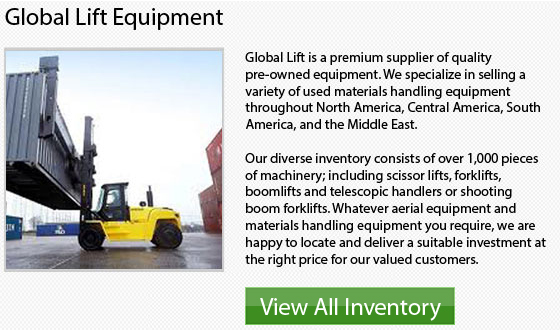
Counterbalance forklifts are essentially lift trucks which are designed with counterweight at the back of the machine. The counterweight works to balance the weight which the tines are carrying at the front of the load. This particular design is engineered to stabilize typical lift trucks. As far as electric counterbalance forklifts are concerned, the counterweight is formed by the battery itself.
Counterbalance lift trucks could often be found in every manufacturer's product range. They are normally manufactured in a variety of configurations and sizes, using a variety of fuel sources. These forklifts can with solid or pneumatic tires, and be designed with 3 or 4 wheels. They can work in diverse applications. These types of lift trucks are equipped with different types of accessories. Common options and attachments comprise: slip sheet attachments, fork shifts, side shifts and hydraulic clamps just to name some items.
Counterbalance lift trucks have changed the material handling business. They have become the cornerstone of storage and distribution systems where they perform loading, stacking, unloading and horizontal transport functions. The average warehouse forklifts are typically utilized for lift heights less than 20 feet or 6 meters. There have been some recently designed units which are capable of lifting to heights 31 feet or 9.5 meters. The smaller 4000 pound or 1-1.8 ton forklifts are the main workhorses within most warehouses. These are the most common units which the majority of small businesses would have. The average warehouse counterbalance forklift is actually a wide-aisle truck which needs roughly 11 feet or 3 meters to turn in.
Furthermore, the counterbalanced lift truck is not necessarily limited to warehouse environments. They are often utilized for heavy use and container carrying along with basically every use in between. Counterbalance lift trucks are the most widely utilized and versatile of all materials handling machines.
The counterbalanced lift truck is common in numerous working environments, such as retail, warehousing and production. This is because of their versatility and durability. Several of the industrial applications include: timber, automotive, chemical and food businesses.